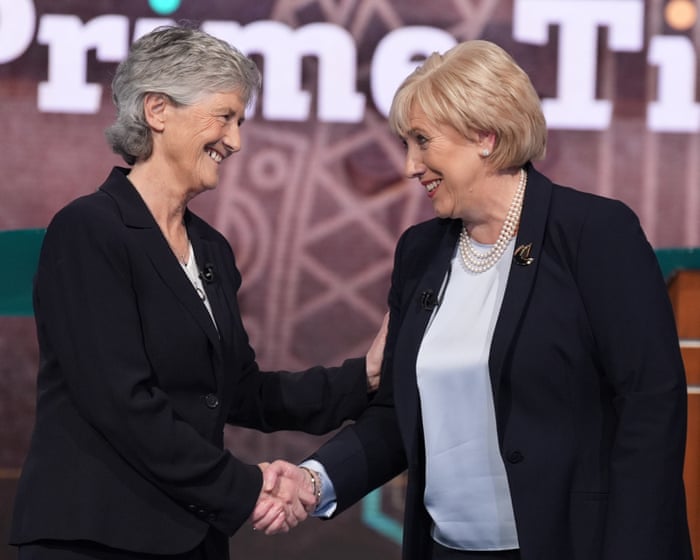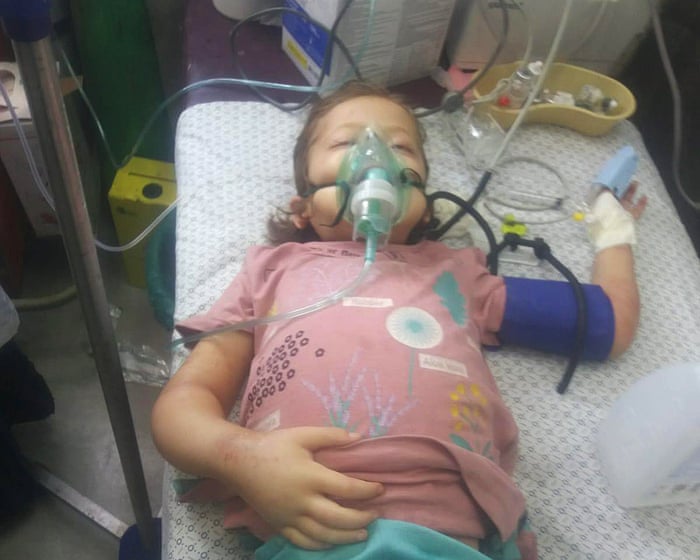Irish voters are heading to the polls to choose a new president, with final opinion polls forecasting a decisive win for Catherine Connolly, a vocal left-wing independent who has resonated strongly with younger generations.
A poll released on Thursday showed Connolly at 40% support, compared to 25% for her rival, Heather Humphreys, a former cabinet minister. After adjusting for undecided voters and those planning to spoil their ballots, Connolly’s lead widened to 55% against Humphreys’ 35%.
Two earlier polls this week also indicated a substantial advantage for the 68-year-old Connolly in the race to succeed Michael D Higgins, who is stepping down after two seven-year terms, positioning her to become Ireland’s tenth president.
Nearly half of voters feel unrepresented by either candidate, raising concerns about low voter turnout and a high number of spoiled ballots.
Although the presidency is largely ceremonial, a victory for the Galway MP would serve as a sharp rebuke to the center-right government. It would also represent a success for a coalition of left-wing opposition parties—Sinn Féin, Labour, the Social Democrats, People Before Profit, and the Greens—who united in an unusual show of solidarity to support Connolly.
A former clinical psychologist and barrister who speaks Irish, Connolly was until recently a marginal political figure. She has energized young voters through viral podcasts and social media posts, earning endorsements from artists and musicians like Kneecap and the Mary Wallopers.
Connolly advocates for equality and aims to protect Irish neutrality from what she describes as Western “militarism.” She has compared Germany’s military spending to the Nazi era and accused the UK and US of enabling genocide in Gaza. Critics label her a radical who could harm Ireland’s relationships with European allies.
Traditionally, Irish presidents have held quiet, symbolic roles, but since 1990, figures like Mary Robinson, Mary McAleese, and Higgins have used the office to promote pluralism, reconciliation with Northern Ireland, and ethical foreign policy more visibly.
Connolly has pledged to respect the limits of the presidency if she moves into Áras an Uachtaráin, the official residence in Phoenix Park. However, her supporters hope she will continue to address issues like the housing crisis, hospital waiting lists, and foreign affairs.
The Irish Times noted, “The interaction between government and the Áras may be about to enter a new and distinctly less congenial phase.”
Election rules and missteps by the ruling center-right coalition narrowed the field to a two-candidate race, giving Connolly an advantage.
Well-known figures such as Bob Geldof, Michael Flatley, and Conor McGregor failed to secure the required backing from four local councils or 20 legislators to appear on the ballot. Geldof claimed that if nominated, he would have easily won and been a “really good” president.
Fianna Fáil put forward Jim Gavin, a political newcomer who withdrew after a financial scandal derailed his campaign. His late exit means his name will still appear on ballots.
Fine Gael’s initial candidate, Mairead McGuinness, dropped out due to health reasons, leading the party to select Humphreys, a 62-year-old Presbyterian from a border county seen as having broad appeal. However, she struggled in debates and was hampered by her ties to the government, which is criticized for its handling of the housing shortage and cost-of-living crisis.
On Thursday, Humphreys campaigned in Cork and Clare, expressing confidence that she could win as a centrist candidate. Connolly, campaigning in Roscommon and Galway, remained cautious, stating, “I am absolutely not taking it for granted. It will be an absolute privilege if the people of Ireland elect me when they cast their vote.”
Polls opened at 7 a.m. and will close at 10 p.m., with results expected on Saturday. Approximately 3.6 million people are eligible to vote.
Frequently Asked Questions
Of course Here is a list of helpful FAQs about the Irish presidential election and the forecasted victory for Catherine Connolly written in a clear and natural tone
General BeginnerLevel Questions
1 Who is Ireland electing as president
Ireland is holding an election to choose its next President who serves as the countrys head of state
2 Who is Catherine Connolly
Catherine Connolly is an experienced Irish politician currently an Independent Teachta Dála or member of parliament for Galway West She previously served as the LeasCheann Comhairle of the Dáil
3 Why is she expected to win so decisively
Forecasts point to a decisive victory because she is seen as a widely respected independent candidate with a strong record of integrity and public service She has built broad crossparty support and is perceived as a unifying figure
4 What does the President of Ireland actually do
The role is largely ceremonial and apolitical The President represents Ireland at home and abroad signs bills into law appoints the Taoiseach and acts as a guardian of the constitution
5 When will we know the official result
The official result will be announced by the Returning Officer after the votes are counted This typically happens a day or two after the polls close
Advanced Detailed Questions
6 What makes this election different from previous ones
This election is notable for the strong forecast of a victory for an Independent candidate like Catherine Connolly who does not belong to one of the major political parties like Fine Gael or Fianna Fáil
7 What are Catherine Connollys key political priorities
While the President must remain above party politics her public career has been marked by a strong focus on social justice equality transparency in government and advocating for the Irish language and the arts
8 How does the Presidential election process work in Ireland
A candidate can be nominated either by at least 20 members of the Oireachtas or by at least four local councils If only one candidate is nominated they are elected without a vote If multiple candidates run the public votes using a system of proportional representation




